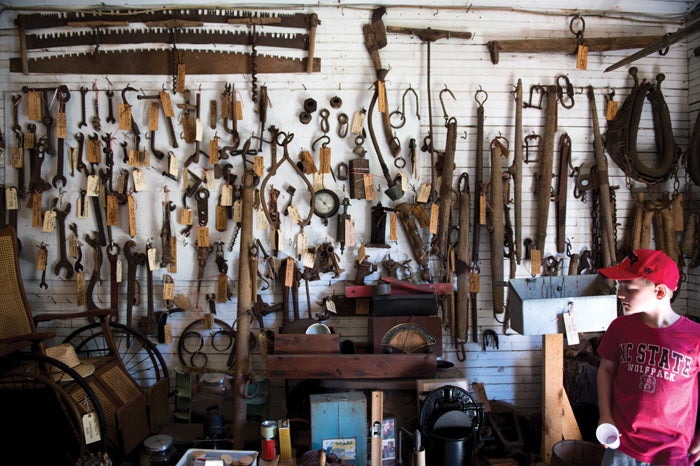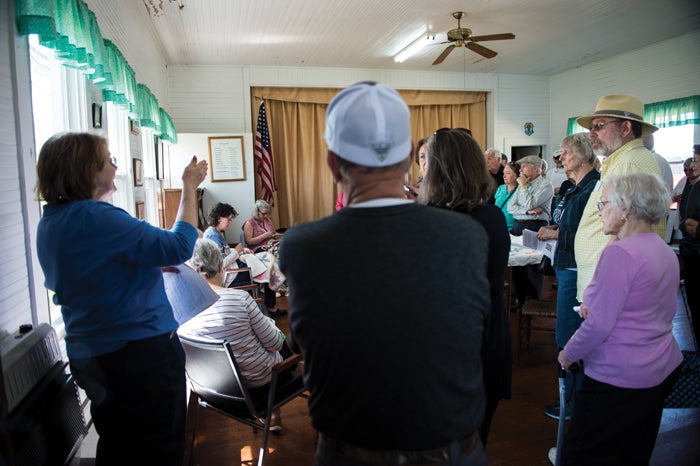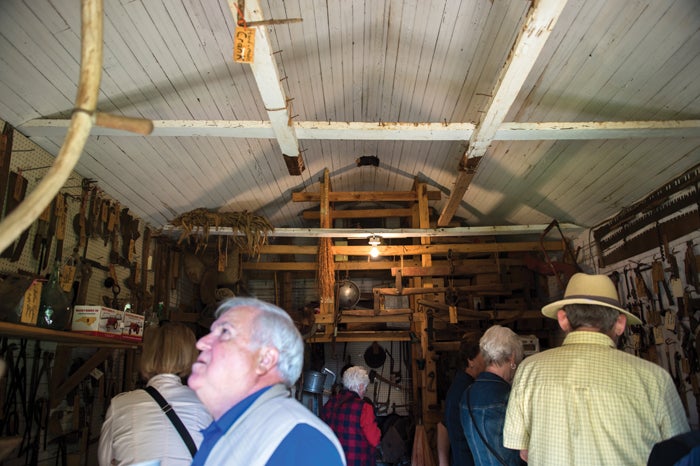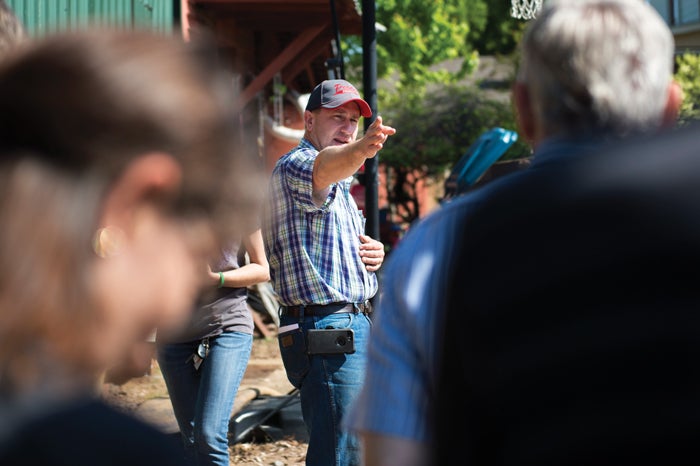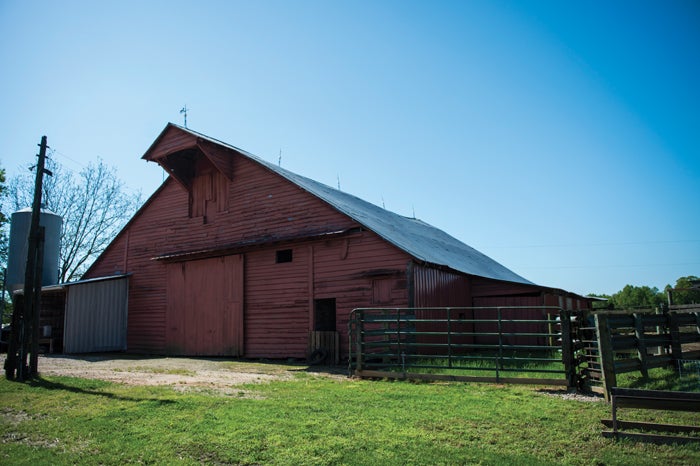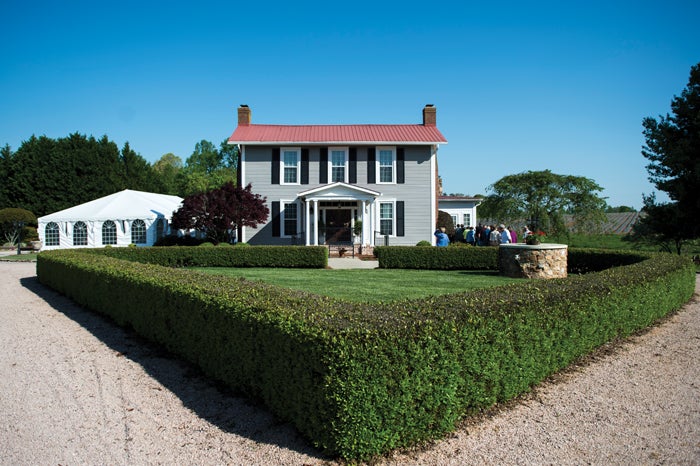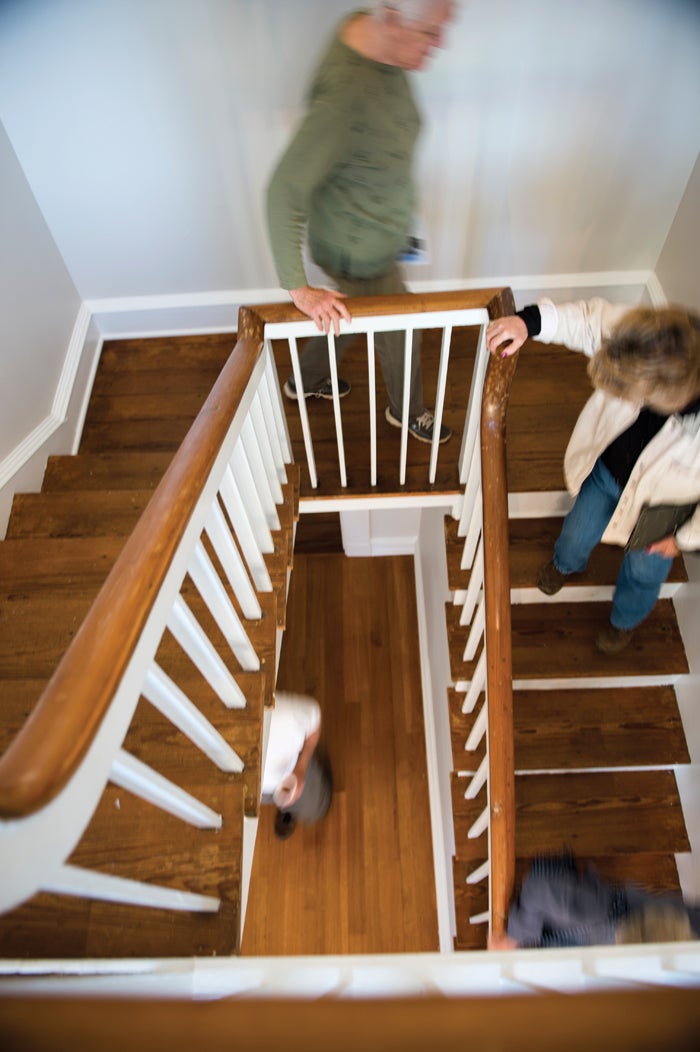Farms and barns: Historic Salisbury tour savors Rowan’s rural life
Published 12:00 am Sunday, April 29, 2018
Before he died in 2001, Guy Deal decided he better go around and label all the antique tools and equipment the family’s Circle D Farm had accumulated over the years.
If he knew, Guy said, he also would include the names of the ancestors who made or used the farm implements.
“I’m glad he had the foresight to do that,” son Oscho Deal said.
It wasn’t long before people on Saturday’s Century Farms and Barns Bus Tour saw what Deal was talking about. The Circle D Farm has several outbuildings filled with farm items that could fill a museum — and Guy Deal’s tags saying what they were used for.
A Black Hawk corn planter. A 1905 forge. A hillside plow. A double cultivator. A three-hole grain drill.
These are the kinds of things you just can’t let go of when your family has lived and farmed on the same pitch of land since 1842.
Historic Salisbury Foundation’s first Century Farms and Barns Bus Tour was an unqualified success Saturday. With little promotion, the foundation quickly had 92 people sign up, enough for two Cross Roads buses.
One bus followed the prescribed route though western and southwestern Rowan County, while the other bus covered it backward. The two buses met in the middle of their itineraries for lunch at West Rowan Volunteer Fire Department.
The West Rowan Future Farmers of America provided the lunch.
The tour lasted all day. Overall, participants visited five farms and the Corriher Grange. Along the way, they also took in the beauty of 11 barn quilts, scattered throughout the trip.
“To live here for 38 years and to still be learning things is a great experience,” said tour-goer Julia Hibbard.
Robert and Linda Hinson drove from their home in Monroe to take part in the tour. They regularly attend Historic Salisbury Foundation’s OctoberTour, and Robert said, “It’s nice to see the country.”
“We love history — and to tour homes.”
Saturday’s stops included the Villa Franca Estate on Patterson Road; the Circle D Farm on Saw Road; the Corriher Grange on Corriher Grange Road; and the Jesse Chalmus Waggoner home place, Henry Clinton Corriher Farm, and Moses Corriher House, all on Corriher Springs Road.
The decorative, hand-painted barn quilts included the morning star pattern at Linda and Derby Holshouser’s farm; the sunflower pattern, belonging to Henry Goodnight; the tulip garden quilt of Hilda and Lee Goodnight; the Save All pattern, or sugar sack quilt, of Vinnie and Philip Duncan; the star in space pattern at Ruth and Kenneth Corriher’s barn; the Dresden plate pattern at Barbara and Larry Graham’s Foggy Bottom Farm; the Silent Star mosaic of Julie and Lonnie Hoffner; the star and chains pattern and an unknown pattern at Adele Goodman’s farm; the wild iris motif quilt at Corriher Brothers Dairy; and the envelope motif at Darryl and Barbara Jo Corriher’s farm.
Besides the property owners, key sponsors and supporters for the day included Rowan County Farm Bureau, Carolina Farm Credit, Salisbury-Rowan Quilters Guild and Elsie Bennett.
Oscho Deal and his son, Eric, chaperoned the groups around Circle D Farm. Eric represents the sixth generation of Deals to live on the farm, and his children — 7-year-old Guy and 3-year-old Maggie — are the seventh generation.
Guy and Maggie served cookies and drinks to the tour-goers. Eric and his family live in the 1900 farmhouse.
“I do have a ‘public’ job,” Eric Deal said, explaining that during the day he’s employed at the Perdue chicken operation in Statesville. He and Oscho otherwise tend to the farm on evenings and weekends.
Around 1900, this particular area — filled with Goodnights, Deals and Corrihers — was known as the Saw community, and it was filled with entrepreneurship, Eric Deal said. There were brick-making, a sawmill, store and blacksmith, for example.
Local history believes the community’s thriving businesses left when the railroad decided on its current north-south path through Landis and China Grove and not through Enochville and Saw.
Oscho and Eric Deal told the interesting story of their ancestor Jacob Washington Deal, who lost his left arm in a sawmill accident. That didn’t stop him from doing his farm work, such as carrying heavy logs and moving hay with a pitchfork.
“He was stout,” Oscho said. “A lot stouter than I am.”
But because of the missing arm and his difficulty getting up and down ladders to the hay loft, the 1900 barn was equipped with steps — something unusual for the day, Oscho said.
Later in life, J.W. Deal lost a leg to diabetes. He sent away for a prosthetic, but it never worked, and he ended up having to use a wheelchair. Eric Deal showed the tour-goers that old-fashioned prosthetic Saturday and had a confession:
“We’ve lost it twice.”
When the tour stopped at the 1916 Corriher Grange building, members of the Salisbury-Rowan Quilters — Teri Davies, Shellie Lenhausen and Joan Soeth — were there working on individual quilts.
They were working next to a huge quilt frame that belonged to the great-great-grandmother of Adele Goodman, whose farm was one of the day’s stops.
Vinnie K. Duncan pointed out the grange’s motto hung proudly near the front door and said it has held true for more than a century in this farming community.
“The Grange provides the opportunity. The people provide leadership. The community reaps the benefits.”
Duncan invited all the tour-goers to the grange’s annual homemade ice cream social on the first Saturday in August. The social has been held since 1931.
“Bring you a chair and sit out under the trees and enjoy the ice cream,” Duncan said.
Beautifully manicured Bradford pear trees line both sides of the center driveway leading up to the 1859 Villa Franca Estate on Patterson Road.
Dennis and Ginger Black own the home, and Dennis said he cuts the trees every three years. But he’s apologetic, explaining that another kind of tree probably would have been used back in the mid-19th century.
“They would have been pin oaks,” Black said.
No one on Saturday’s tour was complaining. The Villa Estate home was handsomely decorated and filled with historical artifacts. The grounds were stunning, and together they were evidence why the estate, once part of a vast farm owned by Confederate War surgeon Dr. Francis Luckey (1823-1878), is used today as a wedding and special-event venue.
“I’ve restored the home twice,” said Black, a retired airline pilot.
During a tour of the inside, Ginger Black pointed out framed medical receipts from Luckey’s days as a doctor and, in a cabinet, some of the medicine bottles he used.
One of the home’s longtime owners was the Rev. Bachman Samuel Brown. The house, originally located at 1350 Millbridge Road, fell into disrepair and was used for grain storage until being rescued and moved to its present site by George and Ada Fleming after 1982.
The Blacks purchased the home in 1998.
Contact Mark Wineka at 704-797-4263.


